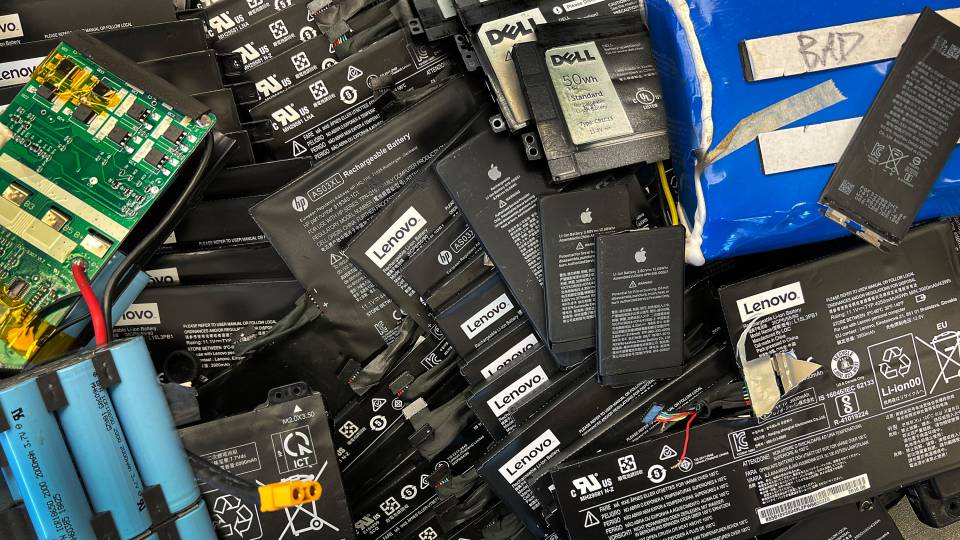People depend on lithium-ion batteries every day to power cellphones, laptops and other electronic devices, and perhaps one day to run cars. This video shows how Craig Arnold, an associate professor of mechanical and aerospace engineering at Princeton University, is working to make those batteries last longer and provide more energy.
Lithium-ion batteries are made up of layers of different materials that are rolled up tightly together. There are three main layers: positive electrode material, negative electrode material and a "separator membrane," which keeps the electrodes from touching one another when snugly packed.

Play the "Putting the squeeze on batteries" video.
Arnold's lab simulates what happens to the separator membrane over years of use. When it is new, the separator membrane has holes much like a sponge. Those holes allow the lithium ions to flow easily, generating power. But as it ages, the sponge-like separator membrane becomes compressed and the holes begin to close, preventing the flow of lithium ions and keeping the current from flowing.
One way to fix this, as Arnold describes in the video, is to prevent the pores from closing by better managing the stress and creating separator materials that can resist these forces.
"Batteries are not just electrochemical devices," says Arnold. "Their mechanical properties can also affect their performance. By better understanding the science of batteries, we can begin to engineer ways to keep the current flowing longer."
Funding for Arnold's research is from the National Science Foundation, Princeton's Carbon Mitigation Initiative and the University's Grand Challenges initiative. Funding for this video is from the High Meadows Foundation Sustainability Fund.





